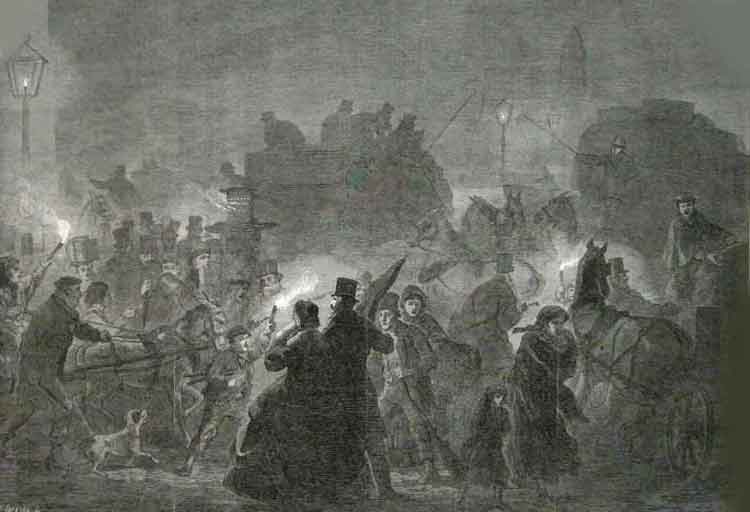Although it wasn’t foggy on the nights when any of the Jack the Ripper murders occurred, fog was a constant problem for the residents of Victorian London.
As well as causing problems for the smooth running of the traffic, the London fog could also be lethal, and there are numerous records of people being killed whenever a dense fog descended on the streets of 19th century London.

KILLED IN THE FOG
The London Evening Standard, in its edition of Friday the 21st of December 1888, carried the story of one unfortunate victim of a London fog:-
Last evening Dr. Macdonald, the Coroner for North-east Middlesex, held an inquiry at the Red House Coffee Palace, High-street, Tottenham, into the circumstances attending the death of James Eli Hawkins, aged 53, late station master at Tottenham Station, whose body, shockingly mutilated, was found lying on the line during the dense fog of Tuesday last.
Mr. M. J. Hawkins, an excise officer, of Kelso, Scotland, said that the deceased was his father, and had been station master at Tottenham for eleven years.
On Tuesday he left his house, which adjoined the station, at eight o’clock, and, about an hour later, his wife was informed of his death.
THE PORTER’S EVIDENCE
Obenry Alldis, of White Cottage, Tottenham, a porter, in the employ of the Great Eastern Railway Company, stated that at 8.30 a.m. on Tuesday morning he was on the platform when the Deceased came up to him and remarked about some trucks that were standing on the siding.
He went across the line to give some instructions respecting them, and, it being very foggy, the witness soon lost sight of him.
Shortly after, on the witness crossing the metals, he found the Deceased lying in the four-foot way.
His body was cut to pieces and a shutter had to be procured before the remains could be removed.
The witness said that the Deceased was obliged to cross the line in the execution of his duty.
GERALD FITZGERALD TESTIFIES
A train had passed through the station at 8.32, and it was supposed that that was the train that knocked the Deceased down.
Gerald Fitzgerald, signalmen at Tottenham Hale, deposed that two trains passed the spot within a few minutes of 8.30. One of them was going citywards and the other was going towards Enfield. The latter sounded his whistle as he passed through the station, but the witness could not say that the other did the same.
The line was clear and he had the signals off for both trains.
THE ENGINE DRIVER’S TESTIMONY
Alfred Underhill, an engine driver, stated that he was in charge of the 1.30 a.m. train from Whitcombe.
He passed through Tottenham at 8.32 on ‘Tuesday, and as he was leaving the station he felt the engine jump as if he had run over something.
On reaching the next signal box, he stopped the train and told the signalman of the occurrence.
It was very foggy at the time, and the witness could not see more than ten yards in front of him.
He blew his whistle before entering the station, and, seeing the signal off, he went right through at the rate of about 15 miles an hour.
GREATER PRECAUTIONS NEEDED
After hearing other evidence, the Jury returned a verdict of Accidental Death, and added a recommendation that the railway company should take greater precautions for the safety of their servants, whose duty takes them on to the line during such dense fogs.
